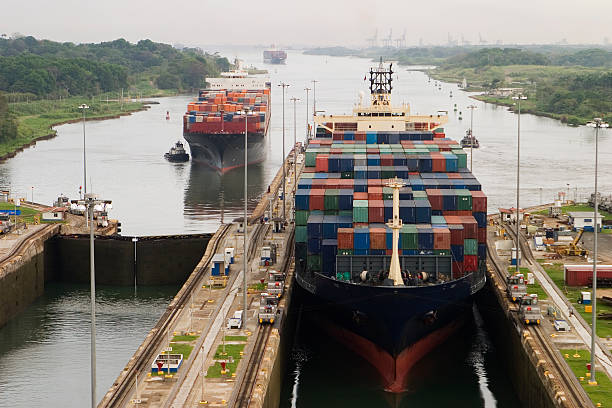The Situation with the Panama Canal Has Improved

Several freighters, assisted by tugboats, are entering the Panama Canal at Gatun Locks on the Atlantic side. These container ships are fully loaded with cargo heading west towards the Pacific.
The situation with the Panama Canal, affected last year by a severe drought that forced vessel transit to be restricted, “has improved,” the secretary general of the United Nations Conference on Trade and Trade said Sunday in the Panamanian capital. “We see that there has been an improvement this year and that the management of the canal and its authorities has effectively improved the restriction that began last year.”
Grynspan, visited our Central American country to see in person the situation of the canal, and discussed her findings with Newsroom Panama, regarding the interoceanic waterway, the only freshwater waterway in the world and through which around 3% of international trade passes. She cited data from a study by the agency according to which, by last January, “transit through the Panama Canal had decreased by 49% compared to the peak in December 2021,” a figure that is now at 42%.
“From 49% to 42%……..I think it is a very important figure. But it remains true that there are restrictions on the passage of ships that are very important for all of Latin America,” she said. “Chile, Peru, Ecuador export through the Panama Canal. But for the world it is a very important issue because China also exports through the Panama Canal,” said Grynspan. Under optimal conditions, about 36 ships cross the Panama Canal daily.
Today there are 31 ships that cross the canal daily and they do so as part of the reduction in transits that has been applied since July 2023, which left the figure at 22 vessels last November and they even had plans to take it to 18 in February of this year if the situation did not improve. Fortunately those bad forecasts ultimately did not materialize before the improvement in water availability happened as a natural event. The Panama Canal said at the beginning of last April that it hopes to completely normalize ship transits in 2025.





